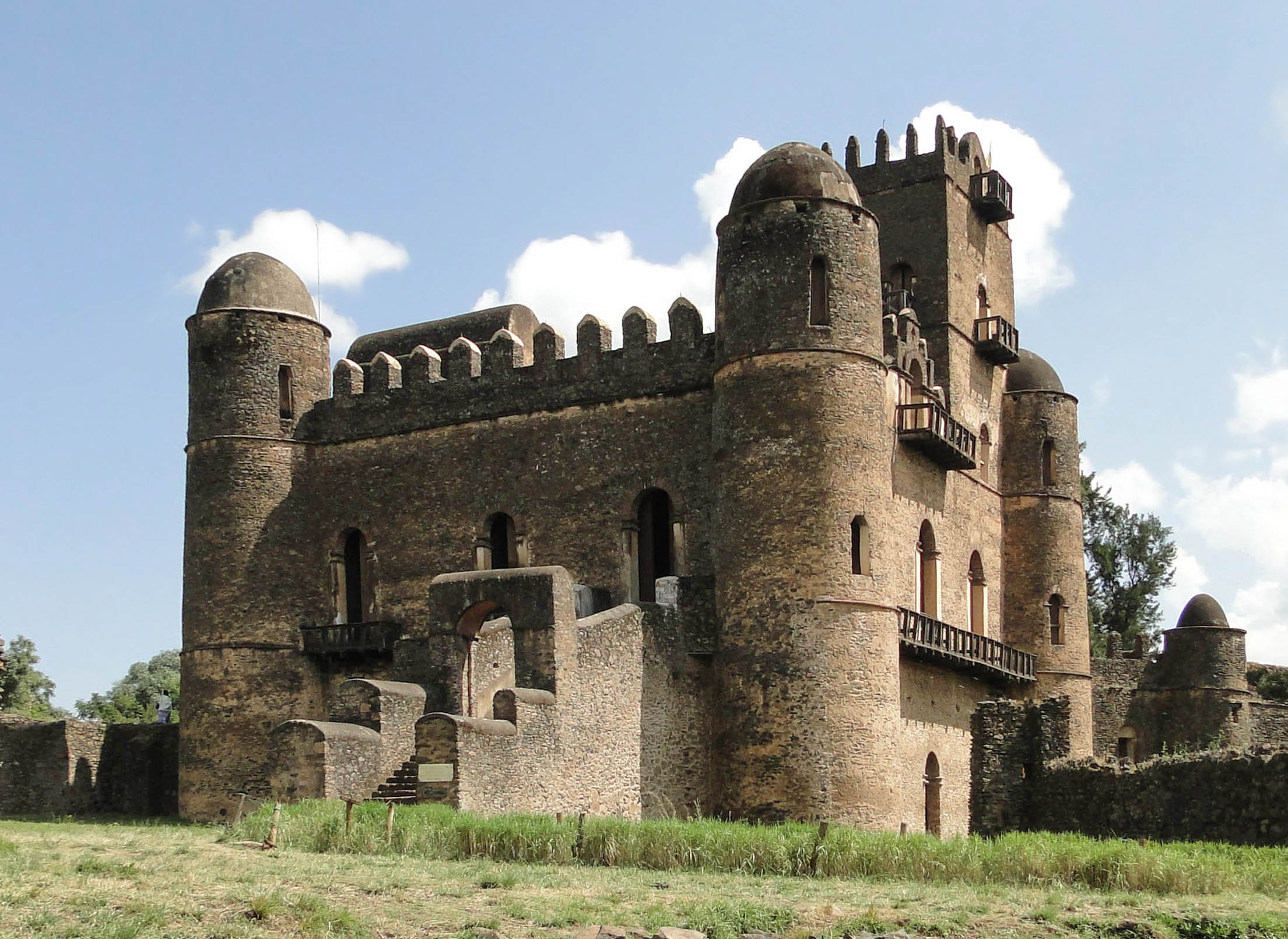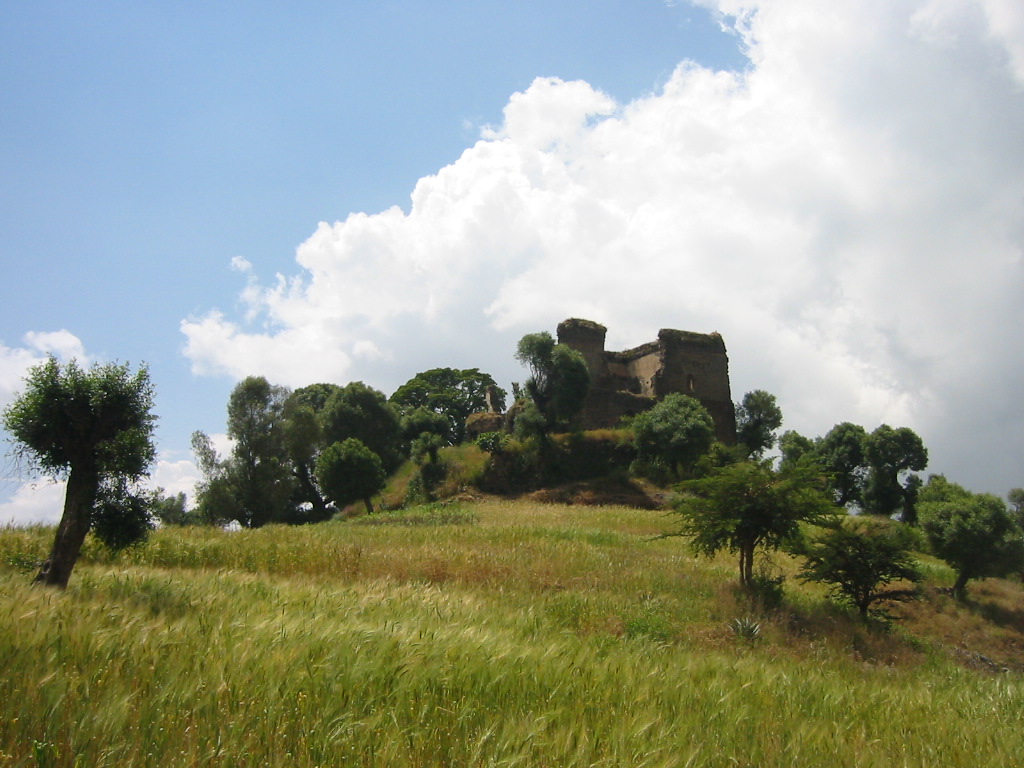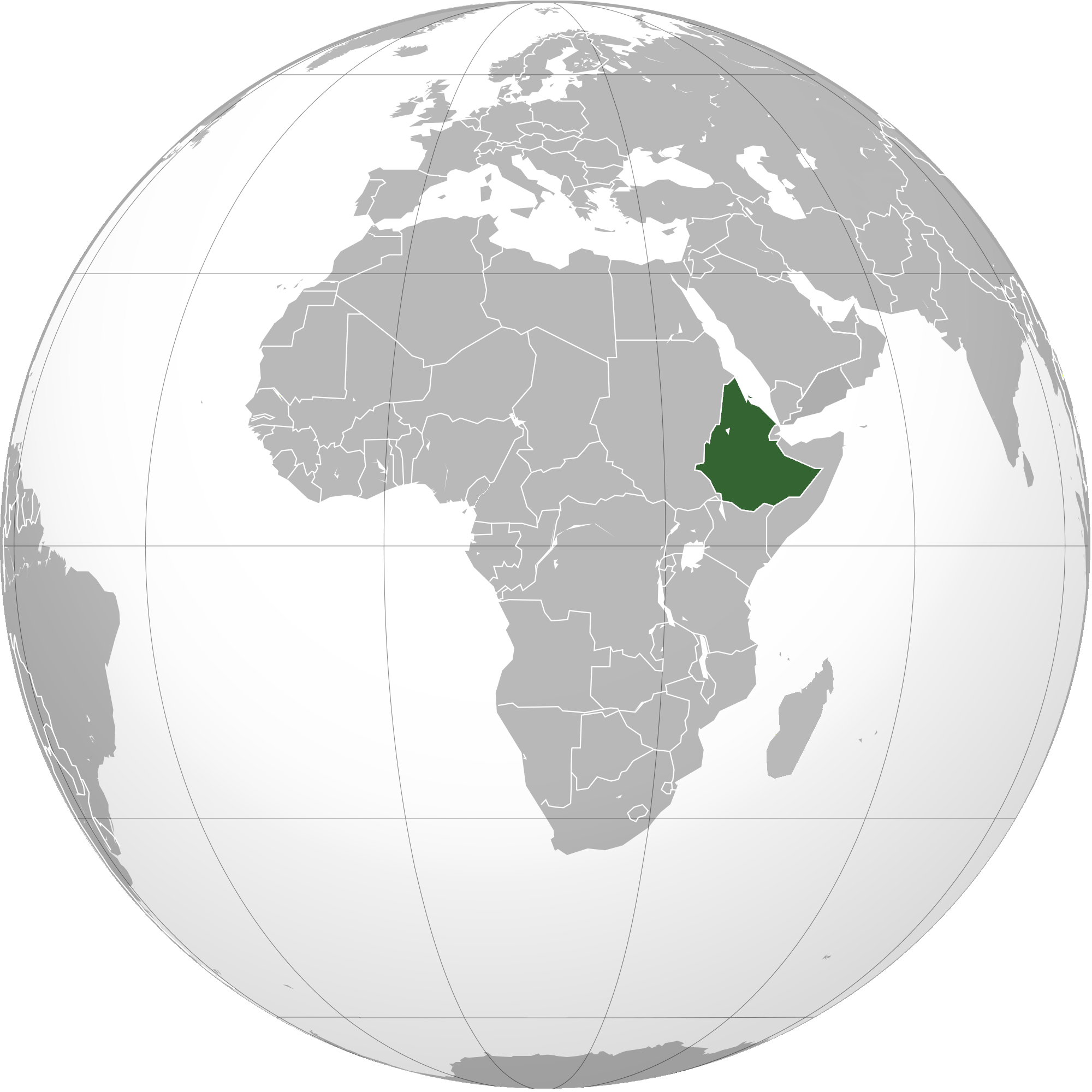|
Fasilides
Fasilides ( Ge'ez: ፋሲለደስ; ''Fāsīladas''; 20 November 1603 – 18 October 1667), also known as Fasil, Basilide, or Basilides (as in the works of Edward Gibbon), was Emperor of Ethiopia from 1632 to his death on 18 October 1667, and a member of the Solomonic dynasty. His throne name was Alam Sagad (Ge'ez: ዓለም ሰገድ). Renowned as the founder of Gondar, the capital of the Ethiopian Empire, Fasilides ushered in the Gondarine period. Notably, he confiscated and exiled the Jesuits, while also establishing security alliances with neighboring Islamic sultanates. Additionally, he played a crucial role in leading the campaign against the Agaw rebels. In 1666, following his son Dawit's rebellion, Fasilides had him imprisoned in Wehni. The emperor himself died a year later and was buried in a monastery on Daga Island in Lake Tana. History Being of Amhara descent, he was the son of Emperor Susenyos I and Empress Sahle Work (Ge'ez: ሣህለወርቅ) (throne name) � ... [...More Info...] [...Related Items...] OR: [Wikipedia] [Google] [Baidu] |
Gondar
Gondar, also spelled Gonder (Amharic: ጎንደር, ''Gonder'' or ''Gondär''; formerly , ''Gʷandar'' or ''Gʷender''), is a city and woreda in Ethiopia. Located in the North Gondar Zone of the Amhara Region, Gondar is north of Lake Tana on the Lesser Angereb River and southwest of the Simien Mountains. , Gondar has an estimated population of 443,156. Gondar previously served as the capital of both the Ethiopian Empire and the subsequent Begemder Province. The city holds the remains of several royal castles, including those in the Fasil Ghebbi UNESCO World Heritage Site for which Gondar has been called the " Camelot of Africa". History Origins The term Gondar was first mentioned during the reign of Amda Seyon I as the name of a regiment of soldiers stationed (likely in Wegera) to guard nearby trade routes and control a restive population. In 1636, Emperor Fasilides selected Gondar as his '' katama'' (royal camp). Situated about 35 km due north of Lake Tana in t ... [...More Info...] [...Related Items...] OR: [Wikipedia] [Google] [Baidu] |
Gondarine Period
The Gondarine period (alt. Gondarian) was a period of Ethiopian history between the ascension of Emperor Fasilides in 1632 and a period of decentralization in 1769, known as the Zemene Mesafint ("Era of the Princes"). Gondar was founded by Emperor Fasilides in 1636 as a permanent capital, and became a highly stable, prosperous commercial center. This period saw profound achievements in Ethiopian art, architecture, and innovations such as the construction of the royal complex Fasil Ghebbi, and 44 churches that were established around Lake Tana. In the arts, the Gondarine period saw the creation of diptychs and triptychs, murals and illuminated manuscripts, mostly with religious motifs. The death of Iyasu I in 1706 began the slow decline in Gondar’s supremacy. Emperor Iyasu I's regent, Empress Mentewab, brought her brother Ras Wolde Leul to Gondar and made him Ras Bitwaded. After this and Iyasu II’s death in 1755, brief dynastic conflicts occurred between Mentewa ... [...More Info...] [...Related Items...] OR: [Wikipedia] [Google] [Baidu] |
Susenyos I
Susenyos I ( ; –1575 – 17 September 1632), also known as Susenyos the Catholic, was Emperor of Ethiopia from 1607 to 1632, and a member of the Solomonic dynasty. His throne names were Seltan Sagad and Malak Sagad III. He was the son of '' Abeto'' Fasil, as well as the grandson of ''Abeto'' Yakob and the great-grandson of Dawit II. As a result, while some authorities list Susenyos as a member of the Solomonic dynasty, others consider him—rather than his son, Fasilides—as the founder of the Gondar line of the dynasty (which is, however, ultimately a subset of the Solomonic dynasty). The life of Susenyos is known through his chronicle, written by several official writers (''sehafe te’ezaz''). The Jesuits, who were closely associated with Susenyos’s reign, also left numerous documents on their mission in Ethiopia. Manuel de Almeida, a Portuguese Jesuit who lived in Ethiopia during Susenyos reign, described the emperor as "tall with the features of a man of quality ... [...More Info...] [...Related Items...] OR: [Wikipedia] [Google] [Baidu] |
Yohannes I
Yohannes I (), also known as Yohannes the Righteous (Ge'ez: ጻድቁ ዮሐንስ), throne name A'ilaf Sagad (Ge'ez: አእላፍ ሰገድ; 1640 – 19 July 1682) was Emperor of Ethiopia from 1667 to 1682, and a member of the Solomonic dynasty. He was the fourth son of Fasilides. Yohannes was appointed '' nəgusä nägäst'' by a council of the senior dignitaries of the Empire, at the encouragement of the noble Blattengeta Malka Krestos. The council then imprisoned the other sons of Fasilides on Mount Wehni, continuing the practice Fasilides had revived. Ancestry Yohannes was the eldest son of Emperor Fasilides and succeeded him 1662. Reign According to G.W.B. Huntingford, Yohannes spent much of his reign campaigning, stating that 6 of the 11 itineraries he reproduced were military expeditions. Three of these were against the Agaw in Gojjam, and Agawmeder, one against the Oromo, and two punitive expeditions to the area around Mount Ashgwagwa— Angot and Lasta—to ... [...More Info...] [...Related Items...] OR: [Wikipedia] [Google] [Baidu] |
Emperor Of Ethiopia
The emperor of Ethiopia (, "King of Kings"), also known as the Atse (, "emperor"), was the hereditary monarchy, hereditary ruler of the Ethiopian Empire, from at least the 13th century until the abolition of the monarchy in 1975. The emperor was the head of state and head of government, with ultimate executive power, executive, judicial power, judicial and legislative power in that country. A ''National Geographic'' article from 1965 called Imperial Ethiopia "nominally a constitutional monarchy; in fact it was a benevolent dictatorship, benevolent autocracy". Title and style The title "King of Kings", often rendered imprecisely in English as "emperor", dates back to ancient Mesopotamia, but was used in Aksumite Empire, Axum by King Sembrouthes (). However, Yuri Kobishchanov dates this usage to the period following the Persian Empire, Persian victory over the Roman Empire, Romans in 296–297. The most notable pre-Solomonic usage of the title "Negusa Nagast" was by Ezana of Ax ... [...More Info...] [...Related Items...] OR: [Wikipedia] [Google] [Baidu] |
Afonso Mendes
Father Afonso Mendes (18 June 1579 – 21 June 1659) was a Portuguese Jesuit theologian, and Patriarch of Ethiopia from 1622 to 1634. While E. A. Wallis Budge has expressed the commonly accepted opinion of this man, as being "rigid, uncompromising, narrow-minded, and intolerant",Wallis Budge, ''A History of Ethiopia: Nubia and Abyssinia'', 1928 (Oosterhout: Anthropological Publications, 1970), p. 390 there are some who disagree with it.Merid Wolde Aregay, "The Legacy of Jesuit Missionary Activities in Ethiopia," in ''The Missionary Factor in Ethiopia: Papers from a Symposium on the Impact of European Missions on Ethiopian Society'', ed. Getatchew Haile, Samuel Rubenson, and Aasulv Lande (Frankfurt: Verlag, 1998); Hervé Pennec, ''Des Jésuites Au Royaume Du Prêtre Jean (Éthiopie): Stratégies, Rencontres Et Tentatives D'implantation 1495–1633'' (Paris: Fundação Calouste Gulbenkian, 2003). The writings of Mendes include ''Expeditionis Aethiopicae'', which describes the custom ... [...More Info...] [...Related Items...] OR: [Wikipedia] [Google] [Baidu] |
Ethiopian Empire
The Ethiopian Empire, historically known as Abyssinia or simply Ethiopia, was a sovereign state that encompassed the present-day territories of Ethiopia and Eritrea. It existed from the establishment of the Solomonic dynasty by Yekuno Amlak around 1270 until the 1974 Ethiopian coup d'état, 1974 coup d'état by the Derg, which ended the reign of the final Emperor, Haile Selassie. In the late 19th century, under Emperor Menelik II, the Menelik II's conquests, empire expanded significantly to the south, and in 1952, Federation of Ethiopia and Eritrea, Eritrea was federated under Selassie's rule. Despite being surrounded by hostile forces throughout much of its history, the empire maintained a kingdom centered on its Orthodox Tewahedo, ancient Christian heritage. Founded in 1270 by Yekuno Amlak, who claimed to descend from the last Kingdom of Aksum, Aksumite king and ultimately King Solomon and the Queen of Sheba, it replaced the Agaw people, Agaw Zagwe Kingdom, kingdom of the Za ... [...More Info...] [...Related Items...] OR: [Wikipedia] [Google] [Baidu] |
Ethiopian Orthodox Tewahedo
The Ethiopian Orthodox Tewahedo Church () is the largest of the Oriental Orthodox Churches. One of the few Christian churches in Africa originating before European colonization of the continent, the Ethiopian Orthodox Tewahedo Church dates back to the Christianization of the Kingdom of Aksum in 330, and has between 36 million and 51 million adherents in Ethiopia. It is a founding member of the World Council of Churches. The Ethiopian Orthodox Tewahedo Church is in communion with the other Oriental Orthodox churches (the Eritrean Orthodox Tewahedo Church, the Coptic Orthodox Church of Alexandria, the Malankara Orthodox Syrian Church, the Armenian Apostolic Church, and the Syriac Orthodox Church). The Ethiopian Orthodox Tewahedo Church had been administratively part of the Coptic Orthodox Church of Alexandria from the first half of the 4th century until 1959, when it was granted autocephaly with its own patriarch by Pope Cyril VI of Alexandria, Pope of the Coptic Orthodox Churc ... [...More Info...] [...Related Items...] OR: [Wikipedia] [Google] [Baidu] |
Lake Tana
Lake Tana (; previously transcribed Tsana) is the largest lake in Ethiopia and a source of the Blue Nile. Located in Amhara Region in the north-western Ethiopian Highlands, the lake is approximately long and wide, with a maximum depth of , and an elevation of . Lake Tana is fed by the Gilgel Abay, Reb River, Reb and Gumara River, Gumara rivers. Its surface area ranges from , depending on season and rainfall. The lake level has been regulated since the construction of the control weir where the lake discharges into the Blue Nile. This controls the flow to the Blue Nile Falls (Tis Abbai) and hydro-power station. In 2015, the Lake Tana region was nominated as a UNESCO Biosphere Reserve recognizing its national and international natural and cultural importance. Overview Lake Tana was formed by volcanic activity, blocking the course of inflowing rivers in the early Pleistocene epoch, about 5 million years ago. The lake was originally much larger than it is today. Seven large ... [...More Info...] [...Related Items...] OR: [Wikipedia] [Google] [Baidu] |
Daga Island
Daga Island (Amharic: ደጋ ደሴት ''Däga Däset'') is an island located in the southeastern part of Lake Tana in Ethiopia. Southeast of the much larger Dek Island, Daga has a latitude and longitude of . The entire island, consisting of a volcanic cone some 300 feet high, is considered holy and no females, either women or farm animals, are allowed on the island.R.E. Cheesman"Lake Tana and Its Islands", ''Geographical Journal'' 85 (1935), p. 496 The primary point of interest of the island is the monastery of Daga Estifanos, or "St. Stephen of Daga". When R.E. Cheesman visited the monastery 4 March 1933, he found the monks there were "the most rigid recluses of any in Abyssinia." The original church dedicated to St. Michael had been struck by lightning and burned down before his time, and was replaced by a modern rectangular one. He was allowed in the ''Irkbet'', where church properties and books were kept, and allowed to examine them. In the back of the same building were i ... [...More Info...] [...Related Items...] OR: [Wikipedia] [Google] [Baidu] |
Wehni
Wehni () is the name of one of the mountains of Ethiopia where most of the male heirs to the Emperor of Ethiopia were interned, usually for life. It was the last of the three such mountains, or ''amba (geology), amba'', said to have been used for that purpose, the other two being Debre Damo and Amba Geshen. From some undetermined time in history, it was the custom that when the Emperor assumed the throne, his brothers and other male relatives would be taken to a royal prison, where they would live until either they were called forth to become the new emperor or died. Mount Wehni was first used as a prison by Fasilides of Ethiopia, Fasilides, when he exiled his son Dawit there for leading a revolt. The mountain was abandoned as a prison during the Zemene Mesafint; more precisely in the 1790s, as Samuel Gobat learned from one Tekla Selassie, "a relative of the king" (that is, the Emperor of Ethiopia). Although James Bruce first mentions the existence of the royal prison at Wehni, ... [...More Info...] [...Related Items...] OR: [Wikipedia] [Google] [Baidu] |






